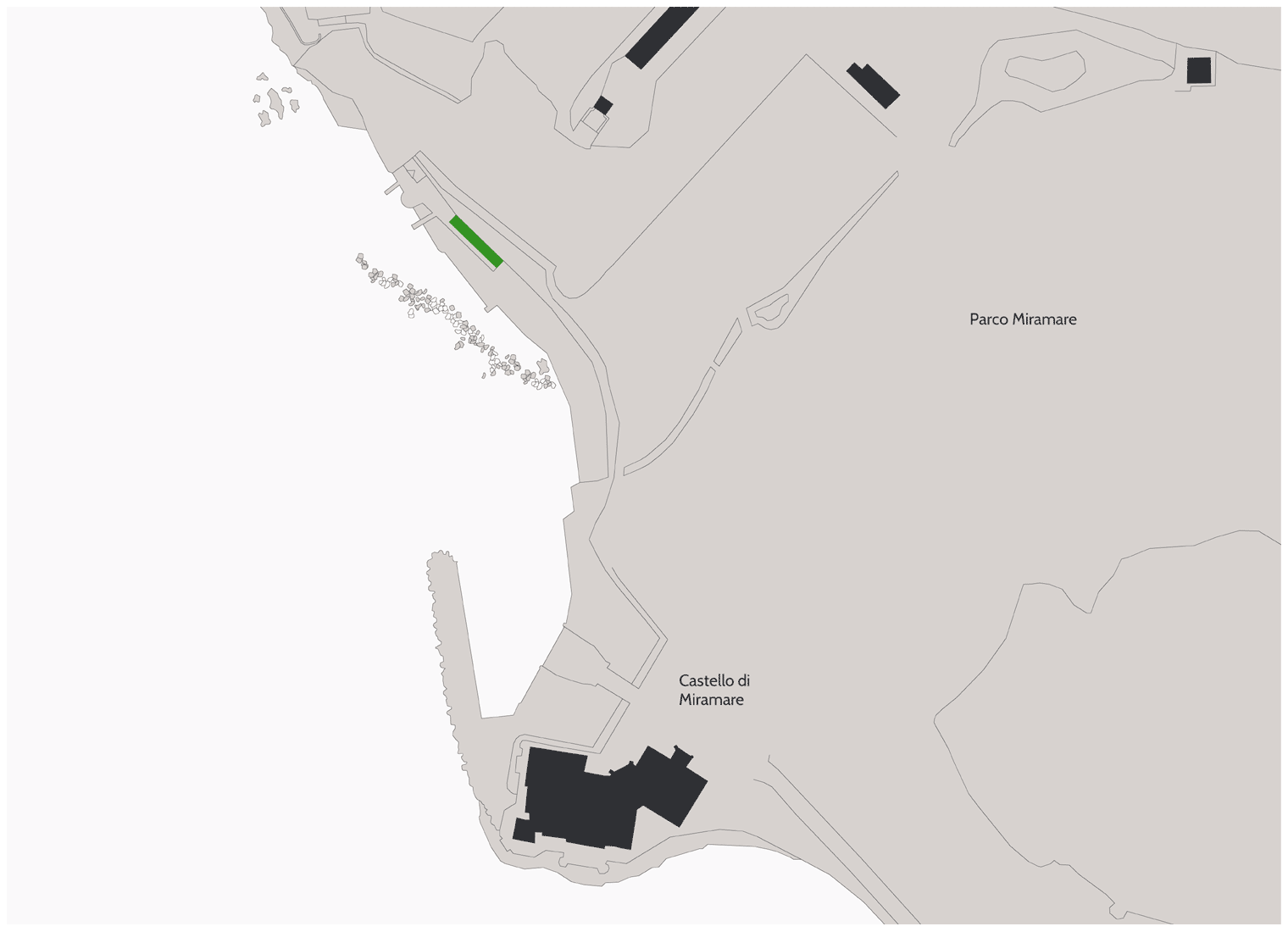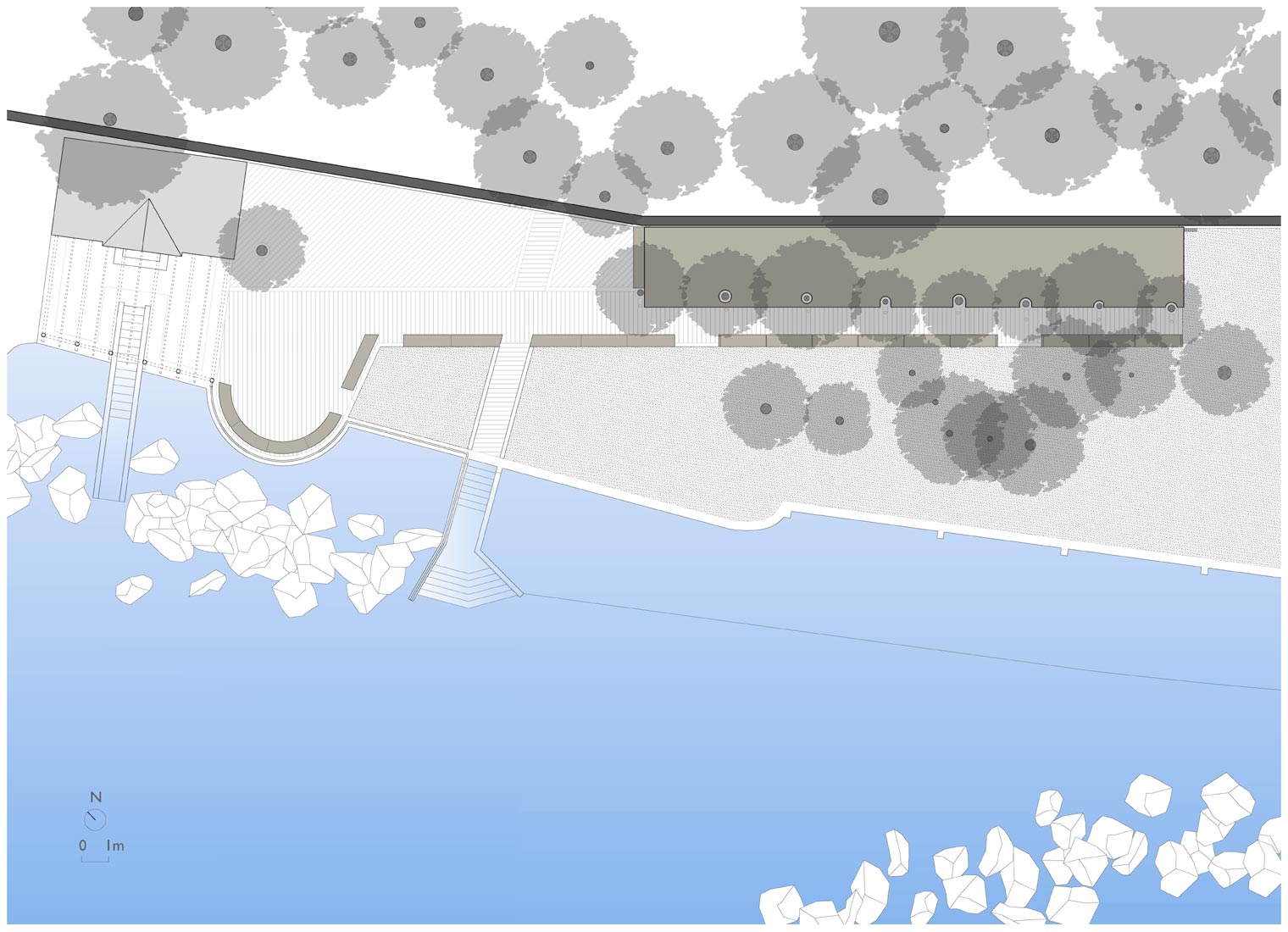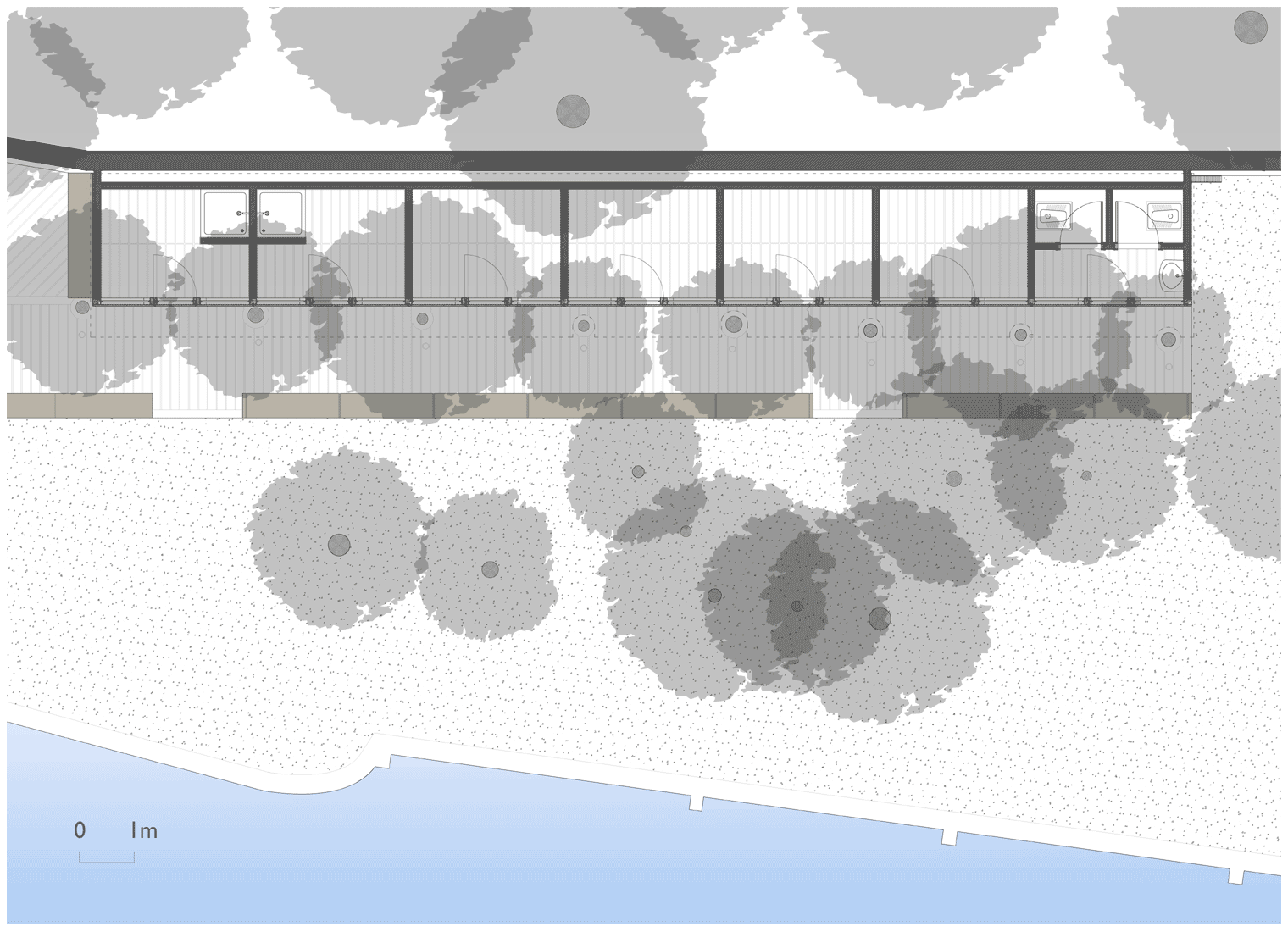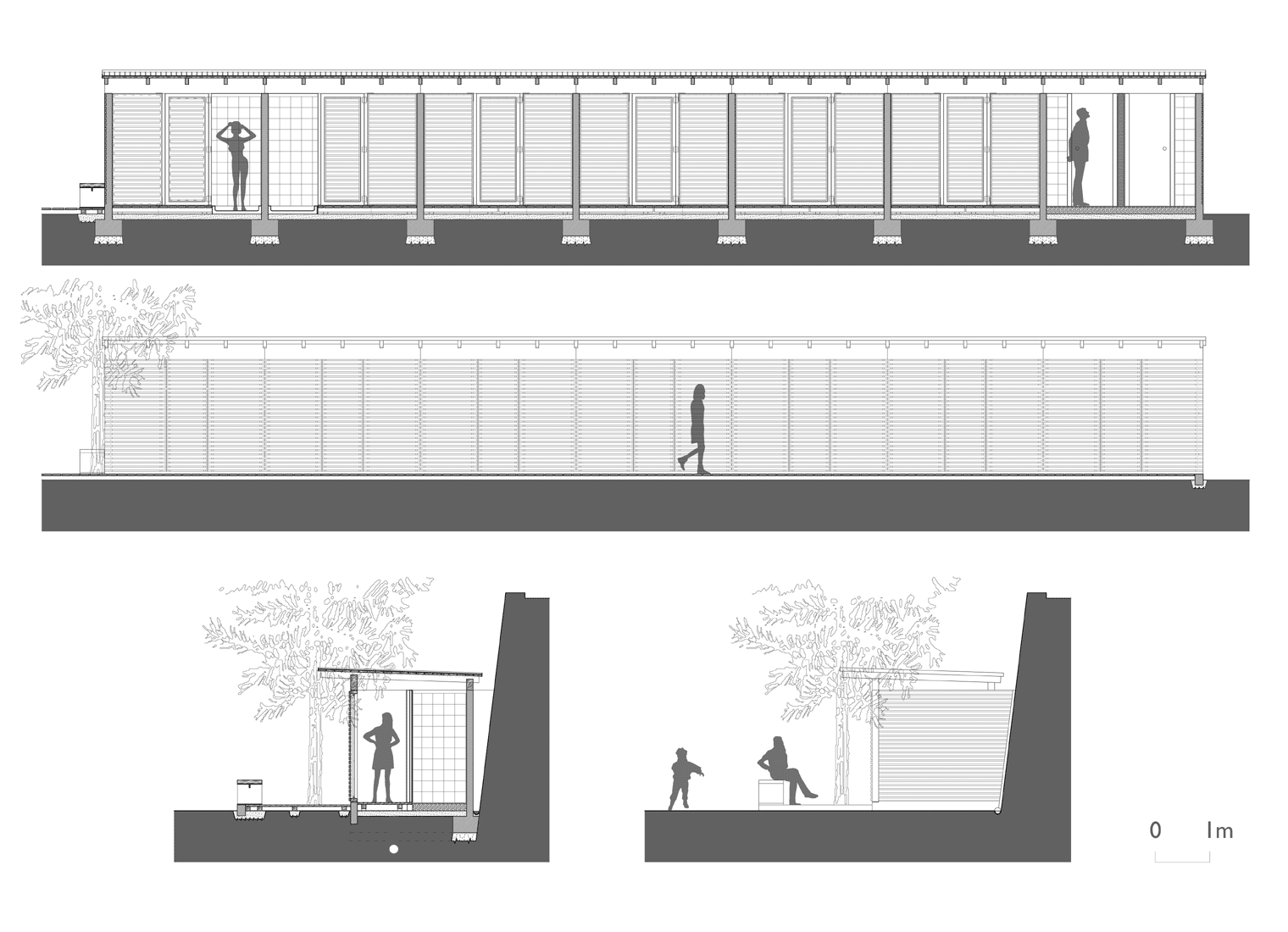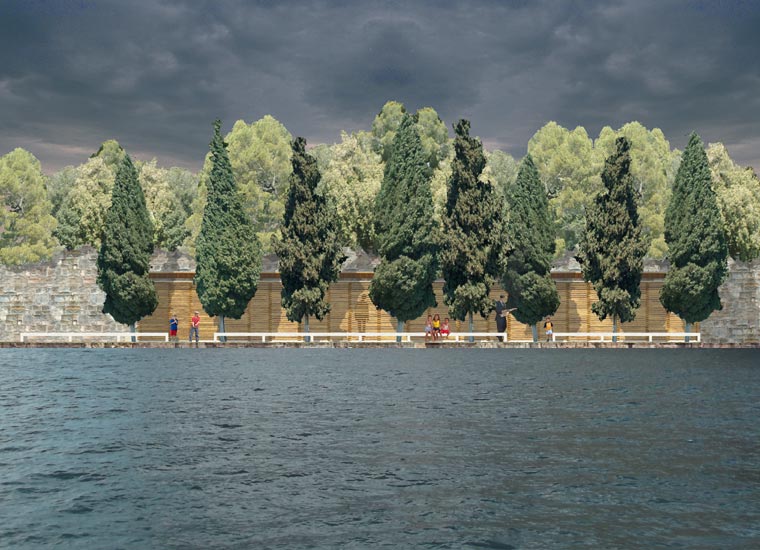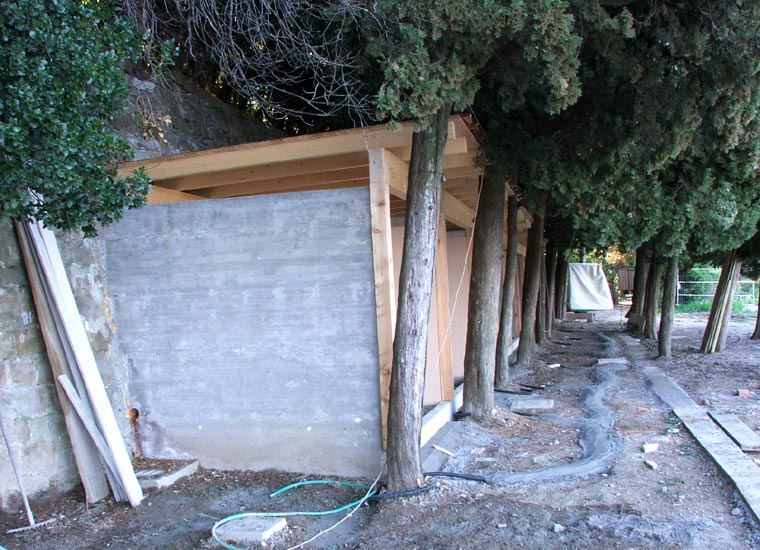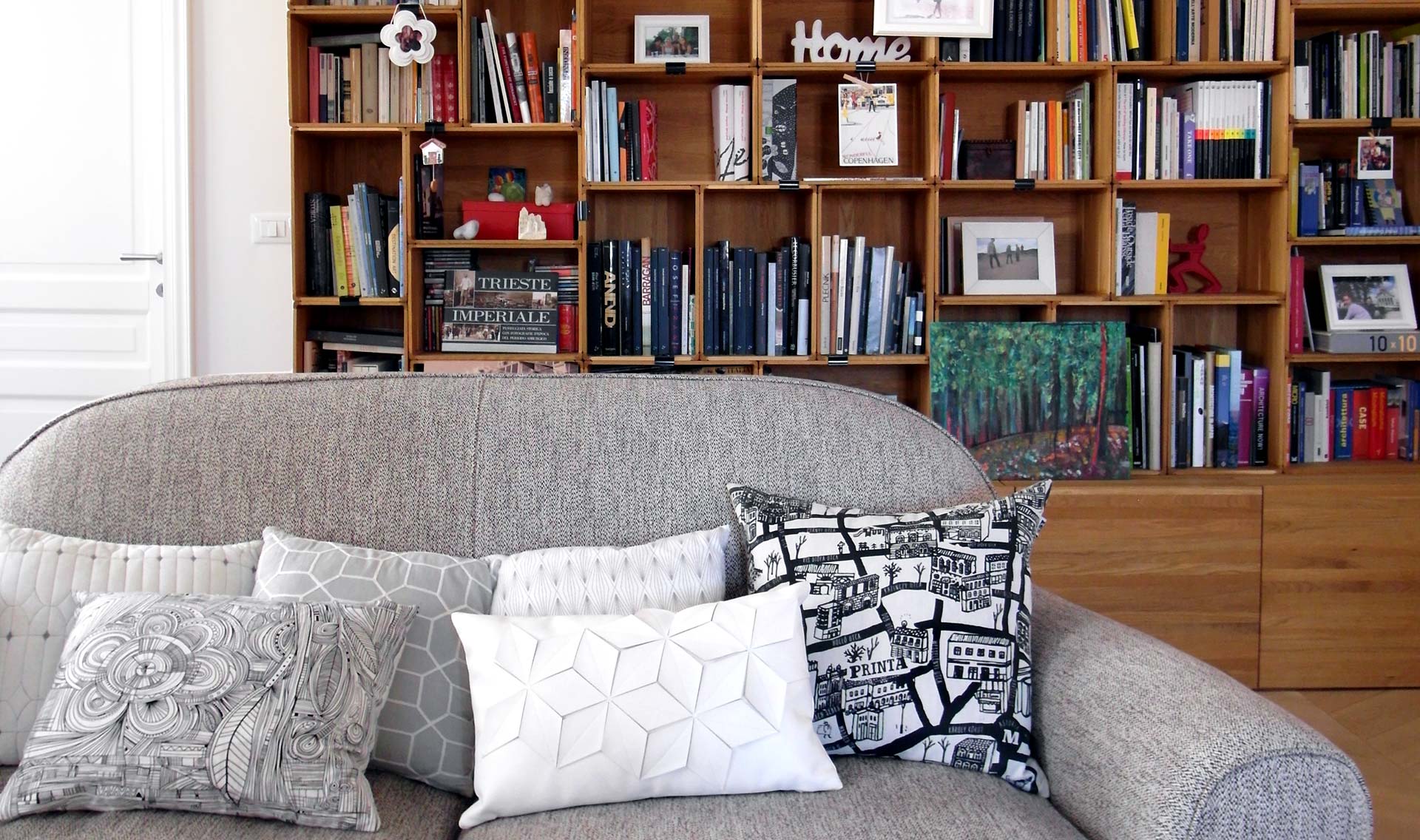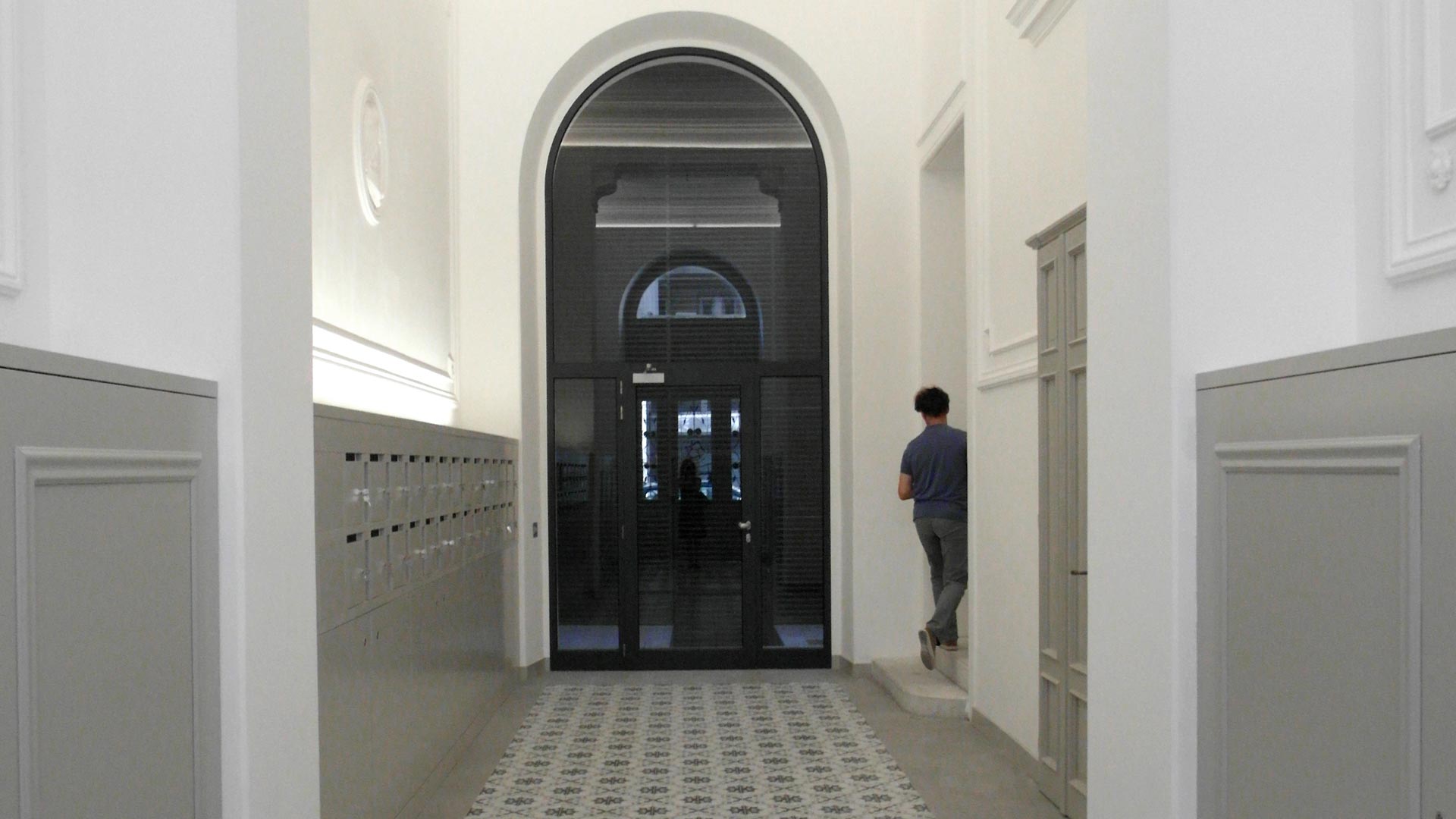Bagno Ducale
Costruzione di spazi a servizio della Riserva Marina di Miramare a Trieste / Construction of spaces serving the Marine Reserve of Miramare in Triest
Info
La Riserva Naturale Marina di Miramare è stata istituita dal Ministero dell’Ambiente nel 1986, copre una superficie di 30 ettari ed è circondata da un tratto di mare di 90 ettari regolamentato dalla Capitaneria di Porto di Trieste. I motivi della tutela di questo tratto di costa, piccola propaggine litoranea del territorio carsico, vanno ricercati nelle particolari caratteristiche geomorfologiche che si riflettono sulla flora e sulla fauna subacquee e fanno dell’area protetta un ambiente unico al mondo.
Le cabine del Bagno Ducale sono uno spazio utilizzato dal personale dell’Associazione Italiana per il WWF, cui il Ministero ha affidato la gestione della riserva marina, per le attività didattiche, divulgative, di monitoraggio e di ricerca da lei svolte. Si tratta di una struttura lineare che vuole integrarsi con dolcezza nel paesaggio in cui si inserisce, rispettando da una parte la presenza del manufatto storico che la affianca (il Bagno Ducale da cui prende il nome, una piccola dependance a servizio del Castello di Miramare voluto da Massimiliano d’Austria), dall’altra i cipressi preesistenti che servono quasi da facciata alla nuova costruzione tanto che la copertura si plasma attorno ai tronchi, curvandosi e bucandosi dove serve per lasciare libero sfogo alla crescita degli alberi secolari. Ne deriva la scelta di rivestire il manufatto con un assito di legno di larice in modo da mimetizzare il più possibile la nuova architettura con il paesaggio naturale attorno, come se fosse stata lì da sempre.
L’intervento ha inoltre previsto la sistemazione degli spazi esterni attraverso la realizzazione di nuove pavimentazioni, sedute e tavolini reclinabili, adatti ad un uso flessibile e polifunzionale dell’area trasformando la spiaggia antistante al Bagno Ducale in una vera e propria aula/laboratorio all’aperto.
The Natural Marine Reserve of Miramare was established by the Ministry of the Environment in 1986, covers an area of 30 hectares and is surrounded by a portion of sea that is 90 hectares wide and regulated by the Port Authority of Trieste. The reasons for the protection of this stretch of coast – a small ramification of the Karst territory – are to be found in the particular geomorphological characteristics of the site that reflect on the underwater flora and fauna and make the protected area a unique environment in the world.
The cabins of the Ducal Bath are a space used by the staff of the Italian Association for the WWF, to which the Ministry has entrusted the management of the marine reserve, for didactic, informative, monitoring and research activities. It is a linear structure that wants to integrate gently into the landscape in which it fits, respecting on one hand the presence of a historical artefact next to it (the Ducal Bath from which it takes its name, a small dependance serving the Miramare Castle and wanted by Maximilian of Austria), and on the other hand the pre-existing cypresses that look like a facade of the new construction. The roof is molded around the trunks, bending and piercing where it is needed in order to let the ancient trees grow free. From here derives also the choice of covering the building with larch wood planks in order to camouflage as much as possible the new architecture with the natural landscape around, as if it had always been there.
The project also provided for the arrangement of the external spaces through the creation of new flooring, seats and reclining tables, suitable for a flexible and multifunctional use of the area: the beach in front of the Ducal Bath becomes in this way a veritable open-air classroom/laboratory.



